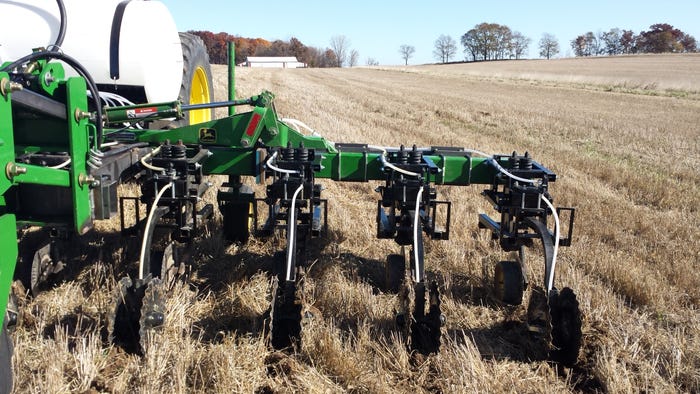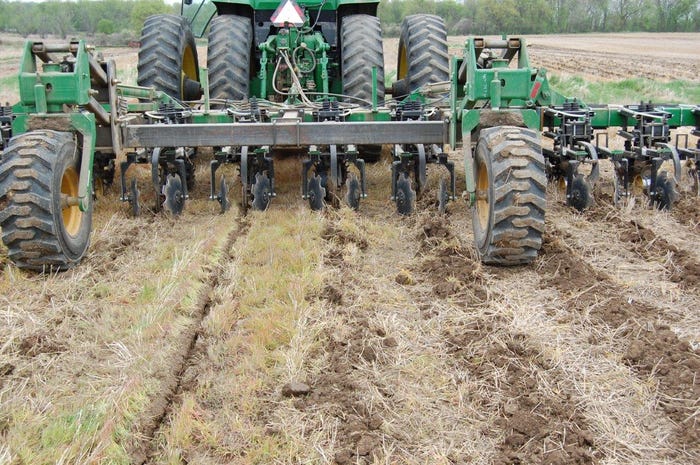October 9, 2018

John Gaska knows the limitations of his small University of Wisconsin plots. Conversely, his brother Jeff, who operates the Gaska family farm in Dodge County, Wisc., appreciates how their discussions help him apply practices on a larger scale in their fields.
This cross-agricultural exchange proved especially valuable when the two decided to transition from no-till to strip-till, driven by a desire for a better seedbed in corn. Key to the plan was designing an implement that could strip-till soybean stubble going into corn and later sidedress the same corn, scratching in liquid N. It took them two years of trying out various components.
"We would build a prototype unit, try it and change it," recalls Jeff. "John's agricultural engineering background was really helpful, as was his familiarity with different components."
"Building it gave me experience that has been useful in my work at the university as we propose and work on strip-till related research," notes John.

To transition the rig from strip-till system to sidedress, the residue cleaners and berming coulters are removed. What remains is the 18-in. cutting coulter, the mole knife with a liquid fertilizer tube fed by two 300 gal. tanks and twin Yetter rolling coulters. The tanks ride on their own frame and hitch, that is bolted to the strip-till tool bar.
Build a strip-till/sidedress unit
By spring 2015, the hybrid tool designed around a John Deere 12-row cultivator toolbar with rear assist wheels was ready. For strip-tilling, it is equipped with 12-row units on 30-inch centers. Components are swapped out for sidedressing with the addition of a 13th row unit and a frame with two liquid fertilizer tanks. The hitch is offset to move the row units in between the standing corn rows. “We have to manually move the assist wheels over 15 inches, so they also run in between the rows. Each change takes about one day,” John said.

Adjusting a home-built strip till rig takes experimenting to determine why the same units can act differently in compacted soil, in sod and in soybean stubble. It’s an ongoing project.
Add cover crop seeding
The strip till/sidedress unit is soon headed back to the shop. The brothers plan to try interseeding cover crops in corn by adding an air flow system to dribble on cover crop seed at V5/V6 during sidedress. Jeff has been moving to a three-crop rotation with winter wheat that is no-till drilled into soybean stubble. A clover cover crop is frost seeded into the wheat to be grazed in the fall by the farm's cow/calf herd. Interseeding expands cover crop options.
"We already scratch the surface with Yetter vertical till units when sidedressing," says Jeff. "We'll dribble seed on right behind them, so the cover crops are ready to take off after harvest. My goal is to have cover crops on every acre. This should help."

Not satisfied with the strip-till systems on the market, John and Jeff Gaska designed their own, opting for Dawn residue cleaners followed by an 18-in. straight cutting coulter. A mole knife was next, with the berm formed by concave notched coulters.
About the Author(s)
You May Also Like




